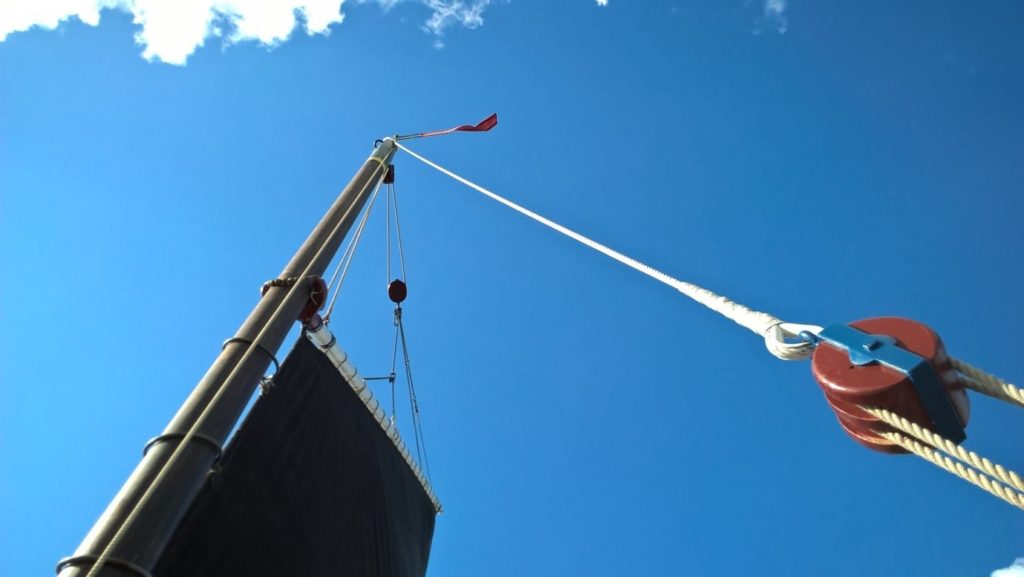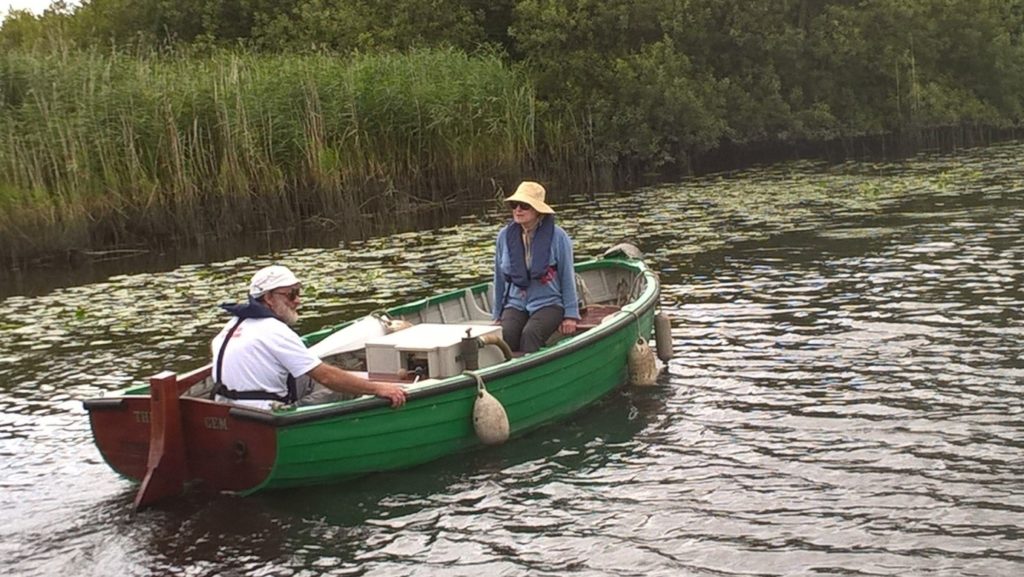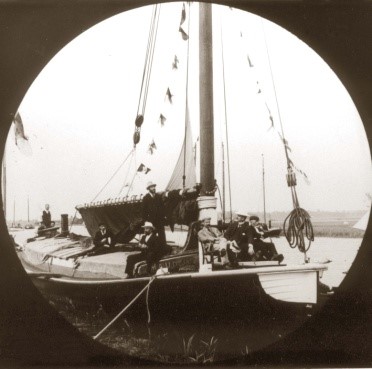Rig & Propulsion
Trading wherries, when built, had no engine (though Maud was later fitted with one in what had been the wherryman’s cuddy). They are a very simple rig: single mast, single sail, raised on a gaff by a single halyard attached to a winch.

The mast itself is approximately 46′ (14m) long, of pitch pine, and is arranged to pivot on an iron pin which locates in two iron cups fastened to the top of the tabernacle. The foot of the mast is counterbalanced with a huge weight of lead, almost touching the bottom of the hull inside. For lowering the mast to negotiate a bridge the winch barrel is swung to one side and the carling hatch (long hatch on the foredeck) is lifted and leant against one of the winch posts. Once the mast gate (strap securing the mast to the tabernacle) is unfastened, the heel of the mast with its lead counterweight can swing up and the main part of the mast can swing down. The operation is controlled by a forestay and rope-tackle attached to the stem head at the point of the bow. The procedure is reversed for raising the mast again.
The sail is a single gaff-rigged mainsail, raised by a hinged winch situated just in front of the mast. It is controlled by a mainsheet tackle working on a horse (metal bar) bolted to the roof of the wherryman’s cabin. A long gaff line (rope attached to the aft end of the gaff) controls the peak of the sail while raising and lowering The boat is steered by a wooden tiller attached to a 7′ (2.1m) long wooden rudder hung on the stern post. Maud’s last rudder was an iron one with hole cut in it for the propeller. This and other relics from Maud’s last working days can be seen at the Museum of the Broads at Stalham. Fortunately Maud’s original vane at the top of the mast is preserved in The Bridewell Museum, Norwich, enabling a replica to be made when the new mast was constructed.
The other traditional method of propulsion for a wherry is the quants. They are 22′ (6.7m) long sturdy pine poles, lifted clear of the water and then jabbed into the river bad near the bow and pushed towards the stern by walking aft along the side deck, thereby moving the wherry forward. When the wind is in the wrong direction or too light Maud can be moved in this way, provided that there are strong and experienced people to wield the quants.
Today it is not always practical to rely on sail and quant power as it is necessary to get back to base at the end of a day’s sailing. The Gem is Maud’s tender, a clinker-built launch with an inboard engine, that can be used to push Maud when conditions are adverse.

When Maud was restored her colour scheme was a matter for debate. Wherry hatches, the sides of the hold, the cabin doors and roof and the mast head used to be painted in their owners’ colours to a traditional pattern. Research lead to the current grey hatches and cabin roof with the lower sides of the hold in dark green and the mast head in dark green with a yellow band. It is such a pity that colour photography did not arrive until after the end of the trading wherry era.

The best way to identify particular wherries in old photographs is if the photo is taken from the bow, showing the name boards. The latter are situated on either side of the mast, giving the name of the wherry on one side and the place of registration on the other. Fortunately this picture, of Maud at a regatta in the early 1900s, is taken from that angle.
Read an introduction to the Norfolk Trading Wherry
Back to Maud’s History
